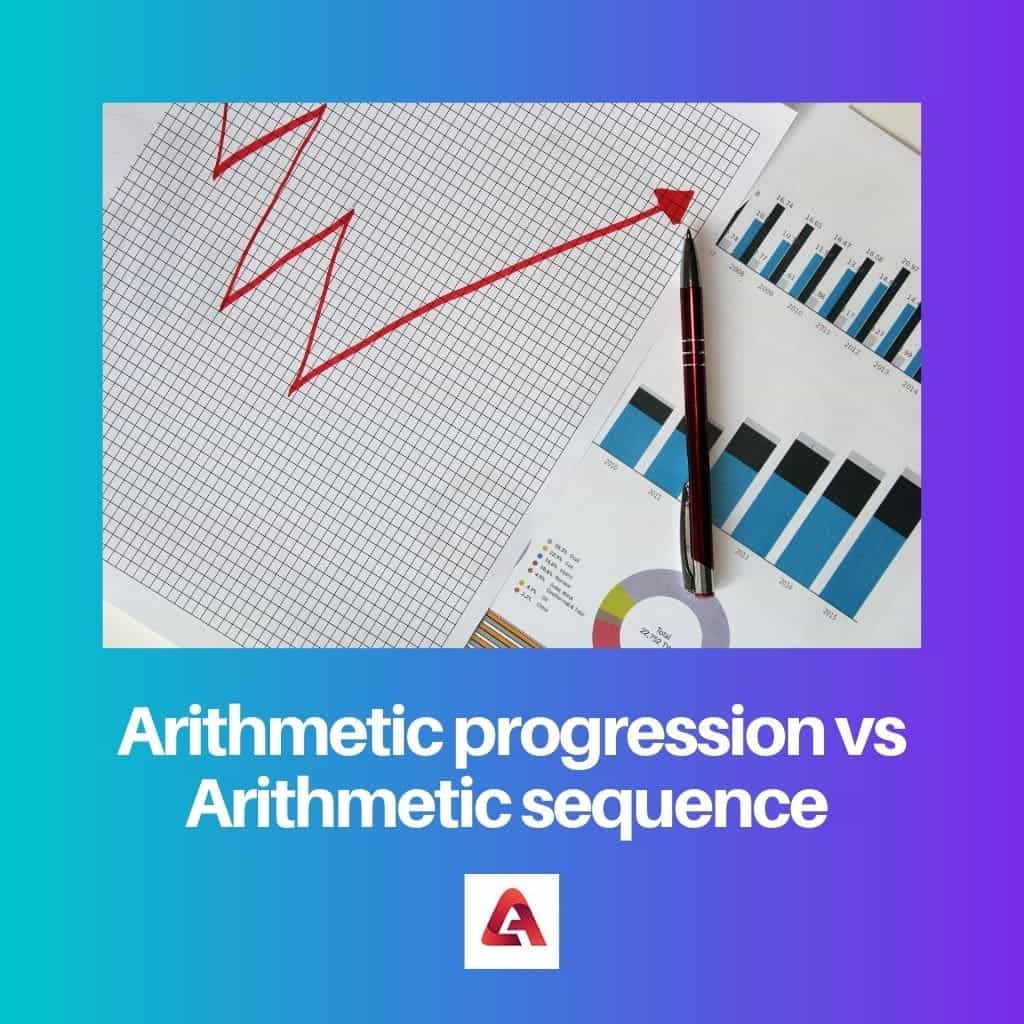The world we live in is made up of many things: trees, clouds, rivers, mountains, buildings, houses, vehicles, types of food, and religion. But people forget to mention the most crucial component that maintains the system in this world: numbers.
That defines the reason why everybody needs to learn and understand math. Math has various branches, and the two main components of math are arithmetic progression and arithmetic sequence.
Key Takeaways
- An arithmetic progression is a sequence of numbers in which the difference between consecutive terms is constant; an arithmetic sequence is another term for arithmetic progression, and both refer to the same concept.
- In both arithmetic progressions and arithmetic sequences, the difference between consecutive terms, known as the common difference, remains the same throughout the series.
- Arithmetic progressions and sequences are used interchangeably to describe the same mathematical concept involving a series of numbers with a constant difference between successive terms.
Arithmetic Progression vs Arithmetic Sequence
An arithmetic progression is a series of numbers in which each term is obtained by adding a constant difference to the preceding term. An arithmetic sequence is simply a list of numbers with a constant difference between each pair of adjacent terms and is a subset of an arithmetic progression.

Arithmetic Progression is any number of sequences within any range which gives a common difference. For example, take a degree from 1,2,3,4, — to any number now; the difference between the number and its following number would be expected for any two numbers in this range.
An arithmetic Sequence is a group of numbers or ranges of numbers with a definite sequence. If a number in this sequence is subtracted from its previous number, we will get a difference that would be common with the distinction of any two numbers in this range.
Comparison Table
| Parameter of Comparison | Arithmetic Progression | Arithmetic Sequence |
|---|---|---|
| Concept | Arithmetic Progression is a series of numbers in a range with a common difference denoted by d. This series extends to an nth term. | Arithmetic Sequence or Arithmetic series is the sum of elements of Arithmetic progression having a common difference denoted by d. |
| Formula | The formula used for Arithmetic Progression is: Let Ln denote the nth term in the series of Arithmetic Progression; it is calculated as follows: · L1 + Ln = L2 + Ln-1 = … = Lk + Ln-k+1 · Ln = ½(Ln-1 + Ln+1) · Ln = L1 + (n – 1)d, where n is 1, 2, … | The formula used for Arithmetic Sequence or Arithmetic Series is: Let M denote the sum · M = ½(L1 + Ln)n · M = ½(2L1 + d(n-1))n |
| Uses | Arithmetic Progression is used in Banking, Accounting, and to calculate balance sheets in monetary work. They are used in services related to finance and also used in architecture and building. | Arithmetic Sequence or Arithmetic Series is used in architecture, building, construction of machinery, and other things with accurate diameters also used in finance and banking. |
| Range | Arithmetic Progression consists of a series of any range up to the nth term. This series has a common difference deduced by subtracting a number from its preceding number. | An arithmetic Sequence or Arithmetic Series consists of a series of a range up to infinity. |
| Differences | Arithmetic Progression is used to find out a missing term or the nth term of that particular series by finding out the common difference from the series. | Arithmetic Sequence or Arithmetic Series is used to find the sum by taking the elements of Arithmetic progression like the nth term, common difference. |
What is Arithmetic Progression?
Arithmetic Progression is a sequence or range of elements used to calculate terms like common difference and nth time. The common difference should be standard for every series component subtracted by its last part to be called an Arithmetic Progression Series.
For example, take a series like 3,6,9,12—-nth term, now when you subtract 3 from 6 or subtract 6 from 9 and so on, you get a common difference of 3; this tells us that the series is an Arithmetic Progression as the common difference is consecutive.

What is Arithmetic Sequence?
Arithmetic Sequence or Arithmetic Series is the sum of elements of Arithmetic Progression having a common difference and an nth term.
To calculate the sum first term and the last time of the series are added, then the sum of these terms is multiplied by ½, and the resultant is multiplied by the number of words in the series.
For example, take a series like 4,8,12,16—nth, now L1 is the first term, and Ln can denote the nth time. Add L1 and Ln, and the sum of these terms will be multiplied by ½ and the number of terms in the series.

Main Differences Between Arithmetic Progression and Arithmetic Sequence
- Arithmetic Progression is the series of a specified range with a common difference that consistently gets by subtraction of two elements in the series.
- Arithmetic Sequence is the sum obtained by the elements of a series of Arithmetic Progression.
- Arithmetic Progression is used in Banking, finance, and monetary situations and some construction-related situations.
- Arithmetic Sequence is used in situations of construction and building and mainly architecture.
- Arithmetic Progression can be used to find out the nth term and common difference, whereas Arithmetic Series determines the sum of elements of Arithmetic Progression.



